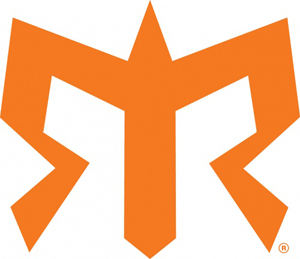If you’re a runner, you know that there is quite a hype over relay racing as of late. If you’re not a runner, you’re probably going to want to start after you learn what fun people are having with all the great relay events across the nation. One event in particular is really grabbing the attention of all types of runners. Elites and newbies alike are flocking to the Ragnar series of relay races.
Ragnar relay races are 200 mile overnight relay races completed by a team of 6-12 runners. The first Ragnar was hosted in Utah in 2004 with 280 participants. This year there are 15 events scheduled nationwide with more than 76,000 runners participating. Clearly, this race has something special if it keeps growing and selling out every year.
The races take their names from a ninth century Norse Viking named Ragnar. The founders, Dan Hill and Tanner Bell, named the races Ragnar due to the viking’s adventure-seeking and conquering personality. They simply state, “run one of our races, and you’ll understand.”
Since 2004, all races are roughly designed the same way: All measuring 200 miles and intended to be completed by a team. Each team member is expected to run three separate legs. With teams varying in size from 6-12 runners, the mileage of each leg can vary. Each race lasts two days and one night as teams run through the night to cover the distance.
The big draw is that each race has a very unique landscape; some of the country’s most iconic terrain is used for the Ragnar races. And if that’s not enough, the race is often decorated with crazy costumed runners, lots of camaraderie, and a huge finish line party. Apparently some refer to the event as “a slumber party without sleep, pillows or deodorant.”
 Because the runners can choose their legs based on difficulty, Ragnar welcomes runners of all abilities. They enjoy that beginners can share the road with elites. The organizers suggest training for Ragnar like you would a half marathon, allowing for 8-12 weeks prior to the race for training. Ragnar races take about 18-36 hours to complete based on a team’s speed, the majority finish in about 25 hours.
Because the runners can choose their legs based on difficulty, Ragnar welcomes runners of all abilities. They enjoy that beginners can share the road with elites. The organizers suggest training for Ragnar like you would a half marathon, allowing for 8-12 weeks prior to the race for training. Ragnar races take about 18-36 hours to complete based on a team’s speed, the majority finish in about 25 hours.
All races support a different charity. For example, Chicago’s event supports the Chicago Area Runners Association (CARA). CARA is an intervention organization that supports Chicago’s youth by training them to complete a half marathon. Colorado’s event supports HERA Women’s Cancer Foundation. California’s race supports the local Leukemia and Lymphoma Society’s Team In Training.
Hanging out with friends while running through the Rocky Mountains, or while running the east coast as you head towards Plymouth Rock, or running along Lake Michigan as you cross the finish line in the “Windy City” are all some of the great places Ragnar can take a runner. It’s very obvious why these events fill fast, they are offering priceless memories disguised as an endurance event.
Team image via Orlando Sentinel
Also Read:
Get your Run on with this Running Music Playlist
How to Increase your Pace for a Marathon [VIDEO]
